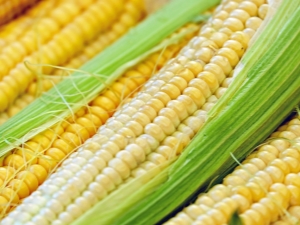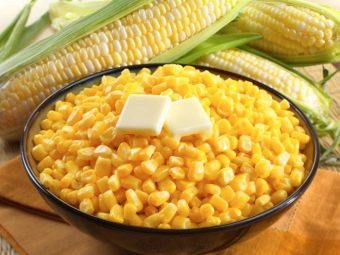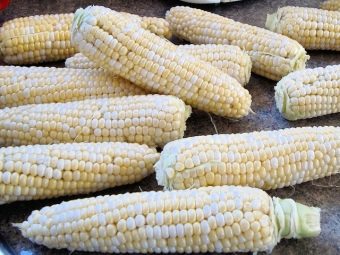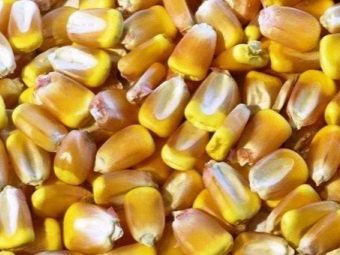How to freeze corn?

Corn for the excellent taste and variety of dishes that can be prepared from it, love both children and adults. However, this fresh cereal is not subject to long-term storage. But this does not mean that the use of the product is possible only in a season. If you properly freeze the vegetable, you can enjoy dishes based on corn for a whole year. It is possible to harvest this vegetable both on the cob and in the grain at home, the main thing is to follow the basic rules and recommendations, which we will discuss in this article.
Benefits of Freezing
If you freeze this cereal for the winter, you can afford to eat the whole year-round product, which has retained most of the useful elements and vitamins. In addition, there is this product can be fresh, forgetting the canned version. It is no secret that the price of cereal in the winter period will increase significantly, in addition, problems may arise with the search for fresh cobs. This means that using frozen corn can save a lot, it is also an undeniable advantage. You also need to consider that it can be frozen in different forms, it will give more options for future use.
Preliminary preparation
The first thing you need to pay attention to before freezing - the right choice of cobs. They should have an average maturity, since to the end the under-ripened ones will be tasteless, and overripe ones will be dryish and not juicy. It should also be borne in mind that during long-term storage of corn its taste will change, as sugar will turn into starch and the unique sweetness will disappear. Therefore, you should use those cobs that were torn off quite recently. Next you need to conduct a visual inspection. This should be done by carefully examining each ear to eliminate rotten, damaged and diseased specimens. After that, the leaves and hair are removed, and the corn is properly washed. You can dry it with a paper towel.
Cobble Frost
Freezing on the cob can be done in two ways. One of them excludes preliminary processing, the other, on the contrary, is carried out with blanching. Let us dwell on both details.
Without pretreatment
This method is the simplest because the cobs do not need to be cooked before freezing. In addition, the procedure is carried out fairly quickly. The process includes preliminary preparation, during which leaves, hairs are removed, and the stem is cut. After washing and drying the cobs are stacked in a dense polyethylene ZIP-bags with a clasp. If desired, you can use simple plastic bags.
Further, the product is tightly packed and placed in the freezer for further storage. In this way, it is possible to freeze not only corn, but also a huge amount of other products.
This option is suitable for lazy hostesses or those who save their time, since the process does not require much labor. However, it also has disadvantages. First of all, it is that the blanks will take up a lot of space, so you need to have a large freezer so that the product does not interfere.
With blanching
A more complicated method of freezing is with blanching a vegetable, but the indisputable advantage of the process is that immediately after thawing the corn will be ready for use. Experts call this method hardening. This is due to the fact that the product prepared in this way perfectly preserves the visual appeal, while it is tasty and has the greatest number of useful elements.
The process itself is as follows. Pre-prepared and purified corn is dipped in water, which has had time to boil, where it is boiled for 5 minutes. After that, it is removed from the pan and immersed in a container with very cold water, where ice cubes are added.It should be borne in mind that in both the first and second cases the corn must be completely hidden by water, this is necessary in order for it to cook and cool equally from all sides. After 3 minutes, the cobs are removed and dried with a paper towel, then placed in the freezer compartment, tightly packed in polyethylene bags.
Freeze beans
The main advantage of this method is a significant savings in space in the freezer compartment. This makes it possible to freeze more corn than in the case of cobs. The disadvantage is a more serious expenditure of time and effort, since the preparation is much more significant. How to freeze raw grains? All the excess is removed, the cobs are carefully dried, after which the grains are cut from them. It is necessary to do this on a cutting board, using the knife as sharp as possible, carefully and slowly, slowly moving the blade from top to bottom. Grains are stored in resealable bags or containers that are placed in the freezer.
Before freezing the cereal grains, they, like the cobs, can be blanched. This will make it possible in the future to use the vegetable immediately, without subjecting it to additional heat treatment, but simply by defrosting. However, this method will also require more time. Blanching grains is as follows. The cobs are cleaned, washed and dried, after which they are placed in boiling water for 5 minutes and then transferred to cold water with ice cubes. The product is cooled for approximately 2 minutes, after which it is removed and carefully wiped with a paper towel. The grains are cut on the board in the same way as in the previous case, they are placed in special plastic bags or containers and placed for freezing.
How long can you keep
Frozen vegetables of various kinds can be stored in the freezer for about one year, but the situation with corn is a little different. The maximum that you can count on is 8 months, if you extend this period, the product will lose its appetizing appearance and excellent taste. It does not matter if blanching was carried out, and the cereal was frozen on the cob or in the grains.
Hostesses need to bear in mind that re-freezing of previously thawed product is strongly discouraged. This means that in the case of corn it should be divided into such portions, which will be able to use one-time.
How to defrost
If the corn has undergone the blanching process, it should be thawed using a microwave oven in a special mode. At the same time on the cob or in the grains is the product - it does not matter. You also need to consider the further use of corn. If it is prepared for soup or a second course, which implies additional thermal effects, the defrosting process itself is not at all necessary.
When it is required to cook corn on the cob, but before that it was not prolanged, you should first defrost the grass a little and only then place it in a saucepan with water.
Reheating frozen corn should not be to avoid the appearance of bacteria, it is better to just leave it on the table in the room for a while. Proper temperature will ensure that the product is placed in the refrigerator, where it will thaw out gradually, albeit for a longer period.
How to cook
To preserve the taste of corn and its appearance, the cooking process should also be approached correctly. Do not cook cereal, past the process of blanching. The process of cooking corn on the cob is as follows. First, the product is slightly defrosted in the microwave, then placed in a pan and cooked for 40-45 minutes. If we are dealing with grains, they do not require defrosting. This frozen product is poured into a container of boiling water, which must be pre-salt, just 20 minutes.
Summing up, it should be noted that getting fresh corn to your table in winter is not that difficult. It is only necessary to carry out the recommendations of experts, as well as responsibly treat the process of freezing, and the product will delight you throughout the long autumn and winter months.
This video presents two ways to freeze corn.






































